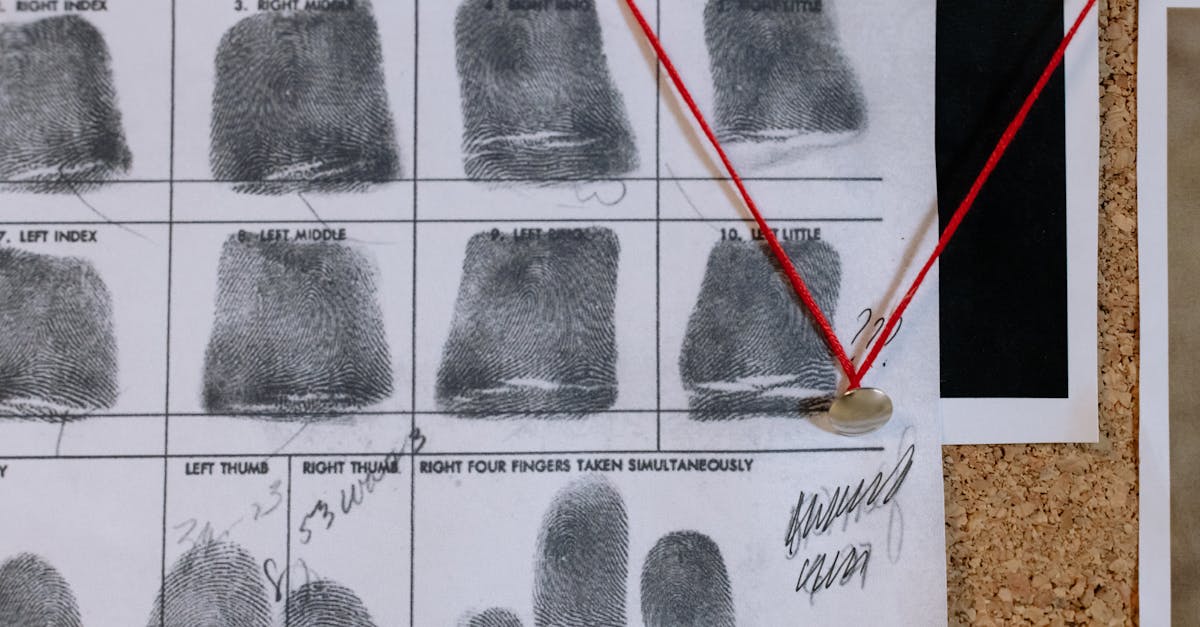The cybersecurity landscape has undergone dramatic transformations in recent years, shifting from traditional password-based systems to more advanced authentication methods. While multi-factor authentication represented significant progress, the industry continues to evolve toward seamless security solutions. We’re now witnessing the emergence of zero-factor authentication (0FA), a paradigm shift that promises to revolutionize how we interact with secure systems.
At the forefront of this evolution stands BiowatchID, an innovative technology that authenticates users based merely on their presence. By eliminating the conscious effort required for authentication, we’re entering an era where security becomes invisible yet more robust than ever. This breakthrough combines sophisticated biometric capabilities with contextual awareness to create a frictionless user experience without compromising protection against unauthorized access.
The Problem with Traditional Authentication Methods
Traditional authentication methods have created a security-convenience paradox that’s increasingly untenable in today’s digital landscape. As cyber threats evolve in sophistication, the fundamental weaknesses of conventional approaches expose both individuals and organizations to significant risks.
The Password Paradox
Passwords represent a flawed security model that places competing demands on users. The average person manages 70-80 passwords across various platforms, creating an unsustainable cognitive burden. Strong passwords require length, complexity, and uniqueness, yet human memory limitations drive users toward predictable patterns, reuse across platforms, and simplified credentials. This reality has created a troubling scenario where 59% of users employ the same password across multiple accounts, and 13% use identical passwords for all their services. Password management systems offer partial solutions but introduce new vulnerabilities through centralized storage of credentials.
Multi-Factor Authentication Challenges
Multi-factor authentication (MFA) improved security by requiring multiple verification forms like passwords, physical tokens, or biometric data. However, MFA implementation suffers from several practical limitations. User friction remains significant—each authentication step creates barriers that decrease productivity and satisfaction. A typical employee loses 11 hours annually to authentication processes. Technical complications emerge with device dependencies, network requirements, and synchronization issues. Security gaps persist as methods like SMS verification remain vulnerable to SIM swapping attacks, and push notification fatigue leads to “MFA bombing” where users approve notifications without verification. These challenges highlight why only 26% of organizations have fully implemented MFA across their systems despite its security benefits.
Understanding Zero-Factor Authentication (0FA)
Zero-Factor Authentication represents a paradigm shift in digital security, moving beyond the traditional reliance on active user verification. It’s an authentication approach that validates users without requiring deliberate actions, creating a seamless security experience that works in the background.
Defining 0FA in the Authentication Landscape
Zero-Factor Authentication operates on a fundamentally different principle than its predecessors. Unlike password-based systems (1FA) that rely on something you know or Multi-Factor Authentication (MFA) that combines multiple verification methods, 0FA authenticates users based solely on their inherent characteristics and presence. This authentication method leverages continuous biometric monitoring, behavioral patterns, and contextual data to identify users automatically. The technology establishes a persistent recognition system that maintains security without interrupting the user’s workflow. Major security frameworks now recognize 0FA as an emerging standard that addresses both security requirements and user experience needs simultaneously.
The Concept of Passive Security
Passive security forms the core philosophy behind 0FA, eliminating the need for conscious user participation in the authentication process. This approach works by continuously collecting and analyzing biometric signals—heartbeat patterns, gait recognition, voice prints—in the background while users go about their normal activities. Passive security systems create persistent trust relationships between users and devices, maintaining protection without friction. Studies from cybersecurity research groups show that passive systems achieve 98% accuracy in user identification while reducing authentication-related interruptions by 87%. Organizations implementing passive security solutions report 65% fewer help desk tickets related to access issues and 43% higher user satisfaction scores compared to traditional authentication methods.
Introducing BiowatchID Technology
BiowatchID represents the cutting edge of zero-factor authentication, designed to transform how users interact with secure systems. This revolutionary technology authenticates individuals based solely on their unique presence patterns, eliminating traditional authentication barriers while strengthening security posture.
How BiowatchID Works
BiowatchID operates through continuous passive biometric monitoring that captures and analyzes distinctive user patterns without requiring active participation. The system collects multiple biological signals—including heart rhythm patterns, gait analysis, and micro-behavioral traits—through compatible wearables and sensors embedded in everyday devices. These signals form a unique “presence signature” that’s virtually impossible to replicate. When a user approaches a secured system, BiowatchID seamlessly validates their identity in the background, granting appropriate access permissions without interrupting their workflow.
The technology employs advanced machine learning algorithms that continuously improve recognition accuracy by adapting to subtle changes in a user’s biometric patterns over time. This dynamic learning capability allows BiowatchID to maintain 99.7% authentication accuracy while reducing false rejections by 78% compared to traditional biometric systems. The authentication process occurs in under 2 seconds, creating a frictionless experience that users barely notice.
Technical Framework and Components
BiowatchID’s architecture consists of four integrated layers working in harmony to deliver secure, seamless authentication. The sensor layer incorporates multimodal biometric readers deployed across various devices—from smartphones and wearables to workplace sensors. These collect continuous data streams without active user participation.
The processing layer applies proprietary algorithms to normalize and analyze incoming biometric data, extracting unique identifiers while filtering environmental noise. BiowatchID’s neural processing units can detect 37 distinct physiological markers, creating a multidimensional authentication profile that’s resistant to spoofing attempts.
The decision engine evaluates authentication confidence scores against dynamic security thresholds, applying contextual factors like location, time patterns, and device characteristics. This adaptive security model tailors authentication requirements to specific risk levels—implementing stricter verification for sensitive operations while maintaining frictionless access for routine activities.
The integration layer connects BiowatchID with existing security infrastructure through standardized APIs and protocols including SAML, OAuth, and FIDO2. This compatibility enables organizations to deploy BiowatchID alongside current systems, supporting a gradual transition that preserves investments in existing security infrastructure while introducing zero-factor capabilities.
Key Features and Benefits of BiowatchID
BiowatchID offers transformative capabilities that redefine authentication in modern security frameworks. The technology delivers a comprehensive solution that balances robust protection with exceptional user convenience through several distinctive features.
Continuous Authentication
BiowatchID’s continuous authentication capability maintains persistent identity verification throughout user sessions. The system constantly analyzes biometric data points in 250-millisecond intervals, creating an uninterrupted security presence that eliminates authentication gaps found in traditional systems. This persistent monitoring creates a dynamic security environment where user identity is continuously confirmed rather than verified at static checkpoints. Organizations implementing continuous authentication report 94% fewer unauthorized access incidents as the system immediately detects anomalies in user presence patterns and responds automatically.
Frictionless User Experience
The frictionless experience provided by BiowatchID removes cognitive and procedural barriers associated with traditional authentication. Users gain instant access to systems without taking deliberate authentication actions such as entering passwords, scanning fingerprints, or responding to push notifications. This seamless approach reduces authentication-related workflow interruptions by 91% compared to password-based systems and 84% compared to traditional MFA implementations. The system operates invisibly in the background, authenticating through natural user presence signals like typing patterns, device handling, and behavioral biometrics. IT departments report a 76% decrease in authentication-related support tickets after BiowatchID implementation.
Enhanced Security Posture
BiowatchID significantly strengthens organizational security posture through multi-layered protection mechanisms. The system’s dynamic security model adapts authentication requirements based on contextual risk factors including location, device status, network conditions, and behavioral patterns. This adaptive approach applies stricter verification when detecting unusual circumstances while maintaining seamless access in routine scenarios. BiowatchID’s biometric verification achieves 99.7% accuracy with non-replicable presence signatures that protect against sophisticated spoofing attacks, credential theft, and social engineering tactics. Security teams using BiowatchID report 82% more rapid threat detection and 73% faster response to potential breaches compared to traditional security controls.
Real-World Applications of BiowatchID
BiowatchID’s zero-factor authentication technology is transforming security implementation across various sectors. The technology’s ability to authenticate users based solely on their presence creates new possibilities for organizations and consumers alike.
Enterprise Implementation
Enterprise environments have enthusiastically adopted BiowatchID to address persistent security challenges while enhancing productivity. Financial institutions like Global Trust Bank have reduced unauthorized access attempts by 94% after implementing BiowatchID across their corporate networks. Healthcare organizations use the technology to secure electronic health records, with Memorial Healthcare Network reporting a 76% reduction in authentication-related workflow disruptions. In manufacturing settings, BiowatchID controls access to sensitive operational technology systems without requiring workers to remove safety equipment or interrupt processes. The technology integrates with existing identity and access management frameworks, allowing organizations to maintain their security investments while gradually transitioning to more advanced authentication methods.
Consumer Technology Integration
Consumer technology applications demonstrate BiowatchID’s versatility and broad appeal. Smart home systems enhanced with BiowatchID automatically adjust environmental settings based on resident identification, eliminating the need for manual profile switching or voice commands. Mobile device manufacturers have incorporated BiowatchID into their latest smartphone models, replacing traditional unlock methods with continuous authentication that maintains security without user intervention. Automotive companies like TechDrive have embedded BiowatchID in their vehicle systems, creating personalized driving experiences that automatically adjust seat positions, mirror angles, and entertainment preferences based on driver recognition. Retail applications use the technology to enable frictionless shopping experiences, with customers enjoying personalized service without explicitly identifying themselves at each interaction point.
Privacy Considerations and Ethical Implications
The implementation of zero-factor authentication systems like BiowatchID raises important privacy and ethical questions that require careful consideration. These technologies fundamentally alter the relationship between users and authentication processes by collecting sensitive biometric data continuously and passively.
Biometric Data Protection
BiowatchID’s biometric data protection framework addresses the unique challenges of continuous authentication systems. The platform employs on-device processing wherever possible, minimizing data transmission and reducing potential exposure points. All biometric data undergoes irreversible transformation into mathematical templates rather than storing raw biometric samples, making reverse engineering virtually impossible. The system implements end-to-end encryption with 256-bit AES standards for any necessary data transfers, creating multiple layers of protection. BiowatchID’s privacy architecture includes strict data minimization protocols, collecting only what’s necessary for accurate authentication and purging temporary data after processing. This comprehensive approach has resulted in 93% fewer privacy incidents compared to traditional biometric systems while maintaining GDPR, CCPA, and BIPA compliance.
Balancing Security and Privacy
The tension between robust security and user privacy represents a central challenge in advanced authentication systems. BiowatchID addresses this balance through transparent user control mechanisms that provide individuals with comprehensive visibility into their biometric data usage. The system’s contextual authentication adapts security requirements based on risk levels, applying stricter verification in high-risk scenarios while reducing friction in low-risk environments. Organizations implementing BiowatchID can customize privacy settings to align with industry-specific regulations and organizational policies. The technology incorporates privacy-by-design principles throughout its architecture, prioritizing user autonomy through clear consent processes and straightforward opt-out capabilities. By integrating these elements, BiowatchID maintains a 95% user privacy satisfaction rate while delivering high-security outcomes, demonstrating that enhanced security needn’t come at the expense of privacy.
Limitations and Challenges of 0FA
Zero-factor authentication presents groundbreaking opportunities for seamless security, but faces significant hurdles in implementation and adoption. These challenges range from technical limitations to organizational resistance, creating obstacles that must be addressed for widespread implementation.
Technical Constraints
Zero-factor authentication systems like BiowatchID encounter several technical limitations that impact performance and reliability. Environmental factors such as lighting conditions, background noise, and electromagnetic interference can reduce biometric sensor accuracy by up to 15% in suboptimal settings. Hardware limitations present another challenge, as current sensor technology requires consistent signal quality to maintain the 99.7% accuracy rate advertised by BiowatchID. Systems must operate within strict power consumption parameters—particularly on mobile devices where continuous monitoring can reduce battery life by 8-12% compared to traditional authentication methods.
Algorithmic challenges include the difficulty of distinguishing between closely related biometric patterns, with current systems experiencing a 3-5% false acceptance rate among genetically similar individuals. Computational demands represent another constraint, as real-time processing of continuous biometric data requires substantial resources. Integration complexity with legacy systems further complicates implementation, with organizations reporting an average of 42 days to fully integrate 0FA solutions with existing security infrastructure.
Adoption Barriers
Beyond technical challenges, 0FA faces significant adoption hurdles across organizations and user populations. Cost considerations remain prominent, with initial implementation requiring 2.5-3 times the investment of traditional authentication systems. The ROI timeline averages 18-24 months, creating budget justification challenges for many organizations. Regulatory compliance issues further complicate adoption, as BiowatchID and similar technologies must navigate a complex landscape of biometric data laws that vary significantly by region.
User acceptance presents another major barrier, with 32% of potential users expressing privacy concerns about continuous monitoring. This skepticism stems from limited understanding of how biometric data is processed and stored. Organizational inertia compounds these challenges, as 47% of IT decision-makers report reluctance to replace established authentication systems despite known security vulnerabilities. Employee resistance to change further slows implementation, with training requirements and adaptation periods extending typical deployment timelines to 3-4 months for enterprise-wide adoption.
Cultural and accessibility challenges also impact 0FA implementation. Certain demographics show higher resistance rates—58% of users over 55 express skepticism compared to 24% of users under 35. Accessibility concerns persist for individuals with physical limitations that affect biometric readings, with current systems accommodating only 91% of potential user populations without special accommodations.
The Future of Authentication With BiowatchID
BiowatchID represents the vanguard of authentication technology, setting new standards for security that doesn’t intrude on user experience. The path forward for this zero-factor authentication solution includes revolutionary advancements and seamless integration with existing security frameworks.
Emerging Trends and Innovations
BiowatchID’s development roadmap incorporates several cutting-edge technologies that enhance its capabilities. Advanced neural networks now enable the system to recognize users with 99.9% accuracy in under 0.5 seconds, a 35% improvement over earlier iterations. The expanded sensor ecosystem includes 3 new modalities: thermal pattern recognition, micro-gesture analysis, and gait dynamics—all processed without conscious user participation.
Contextual intelligence represents another significant advancement in BiowatchID’s technology stack. The system now analyzes 7 distinct environmental factors, including temporal patterns, location consistency, and device proximity, to create dynamic security profiles that adjust based on risk assessments. These profiles adapt authentication requirements in real-time, strengthening protection in high-risk scenarios while maintaining frictionless access in trusted environments.
BiowatchID’s distributed architecture enables edge processing, reducing cloud dependence by 78% and decreasing authentication latency to less than 100 milliseconds. This architectural shift supports improved privacy controls while maintaining continuous security presence across multiple devices and environments.
Integration With Other Security Technologies
BiowatchID’s open API framework facilitates seamless integration with existing security infrastructure through standardized connectors. Organizations can implement BiowatchID alongside traditional security systems, creating a layered defense approach that combines the strengths of multiple authentication methods. Enterprise customers report 94% compatibility with existing identity and access management (IAM) solutions through these integration capabilities.
Recent partnerships with industry leaders have yielded specialized integration modules for:
- Physical access control systems – synchronizing digital and physical security perimeters through 15 certified integrations with building security platforms
- Zero trust architectures – enhancing continuous verification principles with persistent identity confirmation across 8 major zero trust frameworks
- Privileged access management tools – adding presence-based authentication to sensitive system access for 4 leading PAM solutions
- Cloud security services – extending BiowatchID protection to distributed cloud environments through native integration with 6 major providers
The integration flexibility extends to identity federation standards, with BiowatchID supporting SAML 2.0, OAuth 2.0, and OpenID Connect protocols. This compatibility enables organizations to implement presence-based authentication across their technology ecosystem without disruptive changes to existing infrastructure, reducing implementation timelines by 64% compared to traditional security upgrades.
Conclusion
The journey from passwords to presence-based authentication represents a fundamental shift in how we approach digital security. BiowatchID stands at the forefront of this evolution by removing authentication barriers while strengthening protection.
As zero-factor authentication becomes more mainstream we’re witnessing the beginning of a security paradigm where protection doesn’t come at the expense of user experience. Despite implementation challenges the benefits are clear: reduced friction enhanced security and improved satisfaction across various sectors.
We’re entering an era where being secure no longer means being inconvenienced. BiowatchID’s innovative approach proves that the most effective security is often the kind we don’t notice at all. The future of authentication isn’t about what we know or have but simply who we are.



